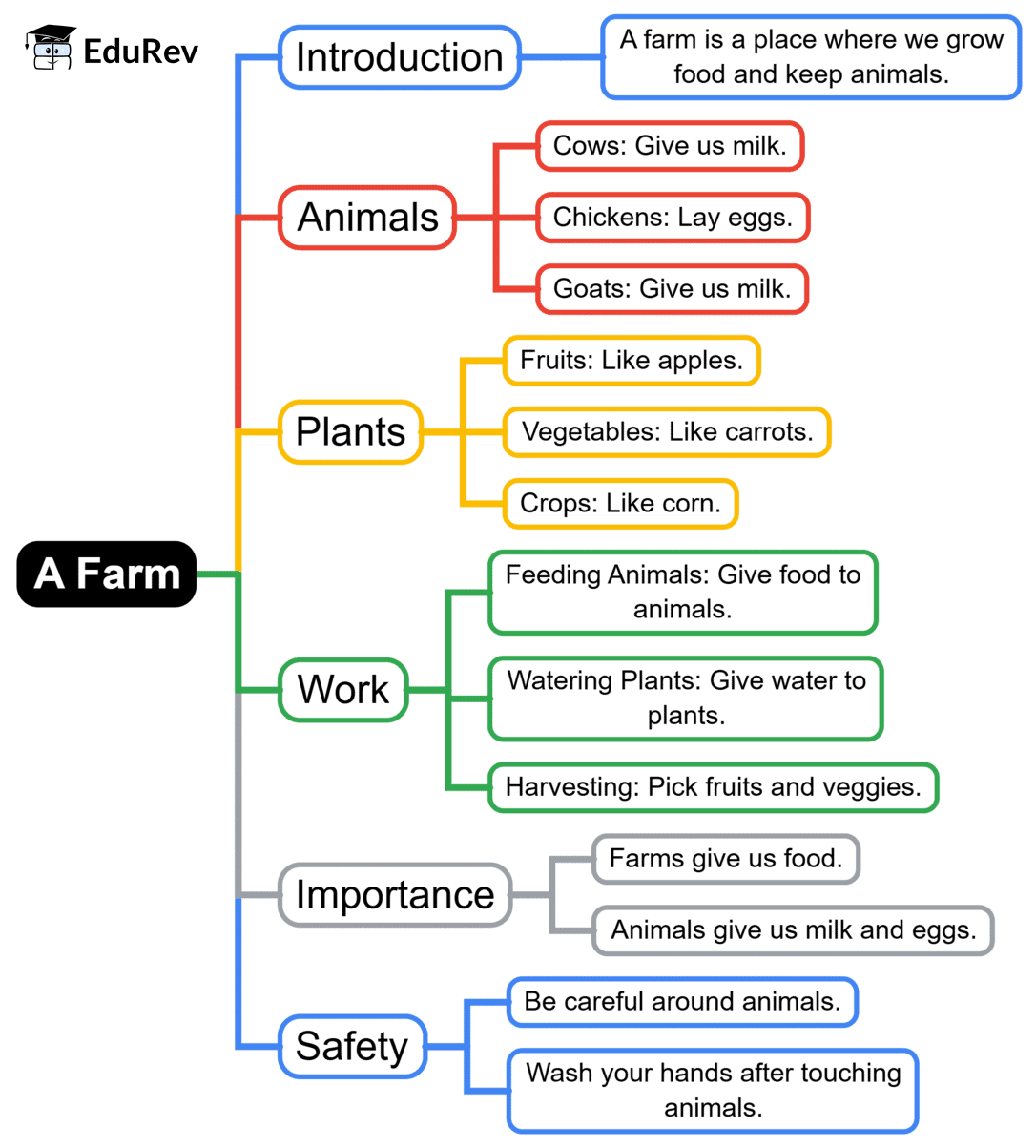Class 1 Exam > Class 1 Notes > English for Class 1 (Mridang) > Mind Map: A Farm
Mind Map: A Farm | English for Class 1 (Mridang) PDF Download

The document Mind Map: A Farm | English for Class 1 (Mridang) is a part of the Class 1 Course English for Class 1 (Mridang).
All you need of Class 1 at this link: Class 1
|
27 videos|219 docs|34 tests
|
FAQs on Mind Map: A Farm - English for Class 1 (Mridang)
| 1. What are the main types of farms and what do they produce? |  |
Ans. There are several main types of farms, including crop farms, livestock farms, dairy farms, and mixed farms. Crop farms primarily grow fruits, vegetables, grains, and other plants. Livestock farms raise animals such as cattle, pigs, sheep, and poultry for meat, wool, and eggs. Dairy farms specialize in producing milk and other dairy products. Mixed farms combine elements of both crop and livestock farming, allowing for a diverse range of products.
| 2. What are the typical roles and responsibilities of a farmer? |  |
Ans. Farmers have a variety of roles and responsibilities, which include planting and harvesting crops, caring for animals, managing farm equipment, maintaining facilities, and ensuring the health of the soil. They also need to keep records of production, manage finances, and stay informed about agricultural practices and market trends.
| 3. How do seasons affect farming practices? |  |
Ans. Seasons have a significant impact on farming practices. In spring, farmers typically prepare the land and plant seeds. Summer is crucial for crop growth and maintenance, including watering and pest control. In autumn, crops are harvested, and farmers may begin preparing for winter. Winter often involves planning for the next planting season and maintaining equipment.
| 4. What is sustainable farming and why is it important? |  |
Ans. Sustainable farming is an agricultural practice that focuses on producing food in a way that is environmentally friendly, economically viable, and socially responsible. It is important because it helps preserve natural resources, reduces pollution, and promotes biodiversity. Sustainable farming practices can improve soil health, reduce the reliance on chemical fertilizers, and ensure food security for future generations.
| 5. What are the benefits of local farming? |  |
Ans. Local farming offers several benefits, including fresher produce for consumers, reduced transportation costs and environmental impact, and support for the local economy. It also fosters community connections as local farmers often sell their products directly to consumers through farmers' markets and community-supported agriculture (CSA) programs, enhancing the relationship between producers and consumers.
Related Searches





















